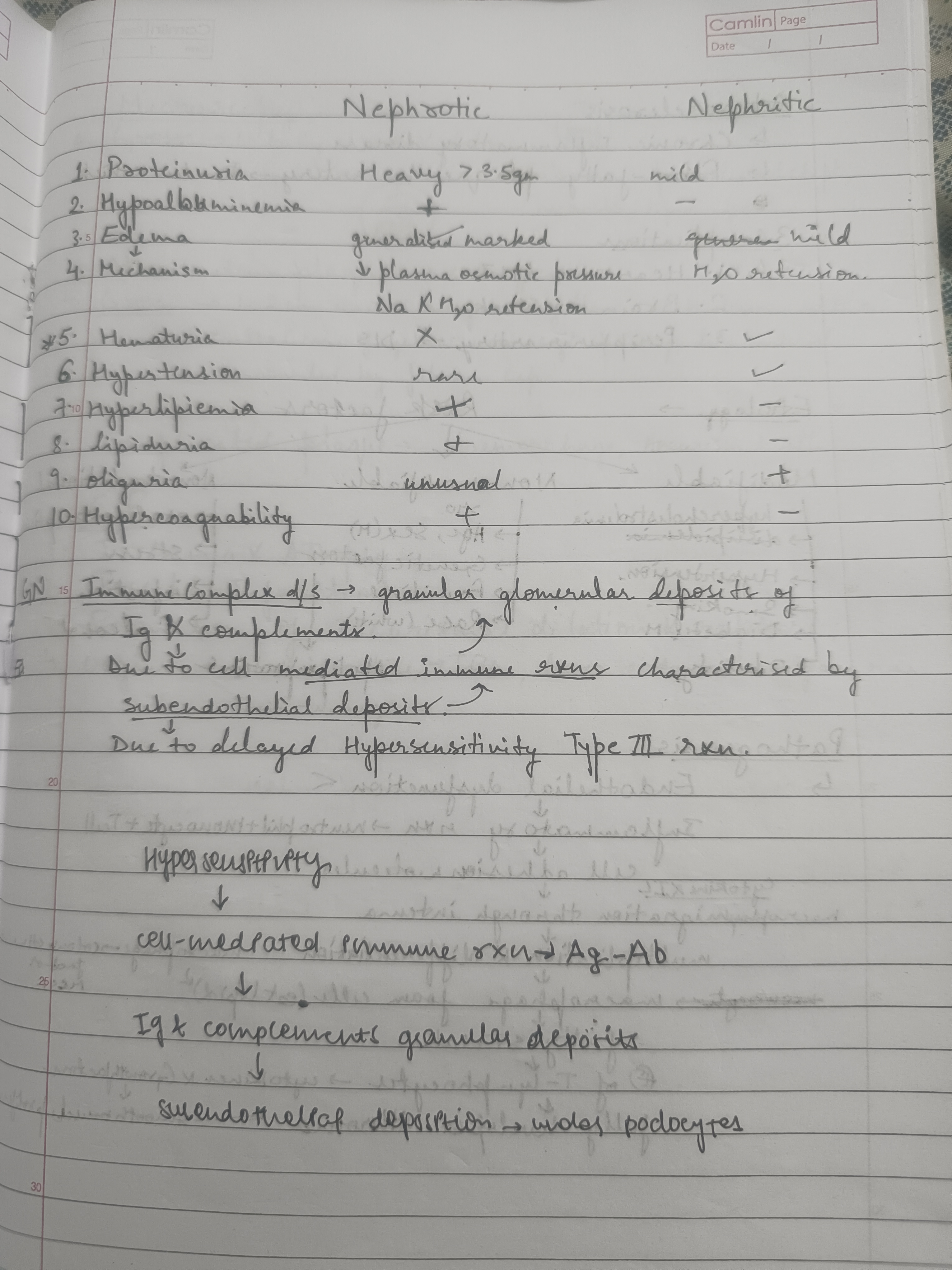
Understand the Problem
The content in the image discusses nephrotic and nephritic syndromes, outlining their characteristics, mechanisms, and differences. It outlines factors like proteinuria, edema, and immune responses, providing a comparative analysis. This is likely for medical study purposes.
Answer
Nephrotic syndrome involves heavy proteinuria (>3.5g/day), marked hypoalbuminemia, severe edema, and hyperlipidemia. Nephritic syndrome has mild proteinuria, hematuria, mild hypoalbuminemia, and mild edema.
The main differences between nephrotic and nephritic syndromes are the severity of proteinuria, presence of hematuria, and levels of hypoalbuminemia, edema, and hyperlipidemia. Nephrotic syndrome is characterized by heavy proteinuria (>3.5g/day), marked hypoalbuminemia, severe edema, and hyperlipidemia. Nephritic syndrome has mild proteinuria, hematuria, mild hypoalbuminemia, and mild edema.
Answer for screen readers
The main differences between nephrotic and nephritic syndromes are the severity of proteinuria, presence of hematuria, and levels of hypoalbuminemia, edema, and hyperlipidemia. Nephrotic syndrome is characterized by heavy proteinuria (>3.5g/day), marked hypoalbuminemia, severe edema, and hyperlipidemia. Nephritic syndrome has mild proteinuria, hematuria, mild hypoalbuminemia, and mild edema.
More Information
Nephrotic syndrome is typically associated with glomerular diseases that cause non-inflammatory damage while nephritic syndrome is associated with glomerular inflammation.
Tips
A common mistake when distinguishing these syndromes is overlooking the presence of hematuria, which is typically seen in nephritic syndrome but not in nephrotic syndrome.